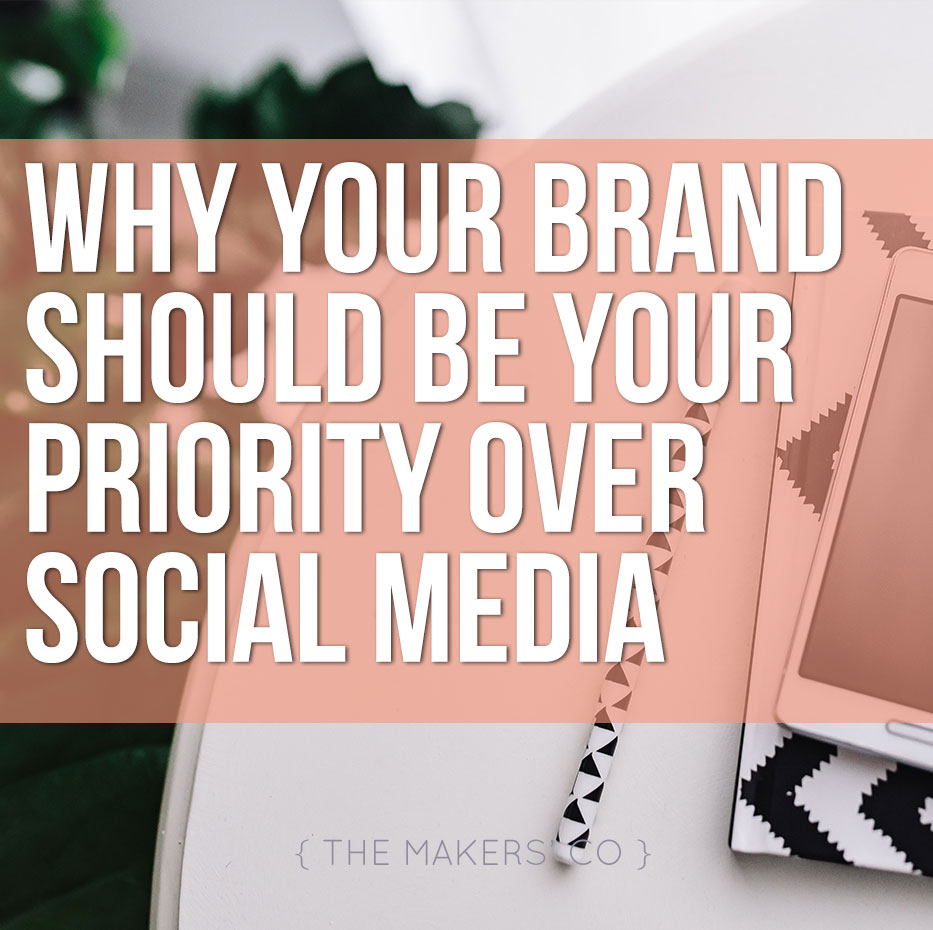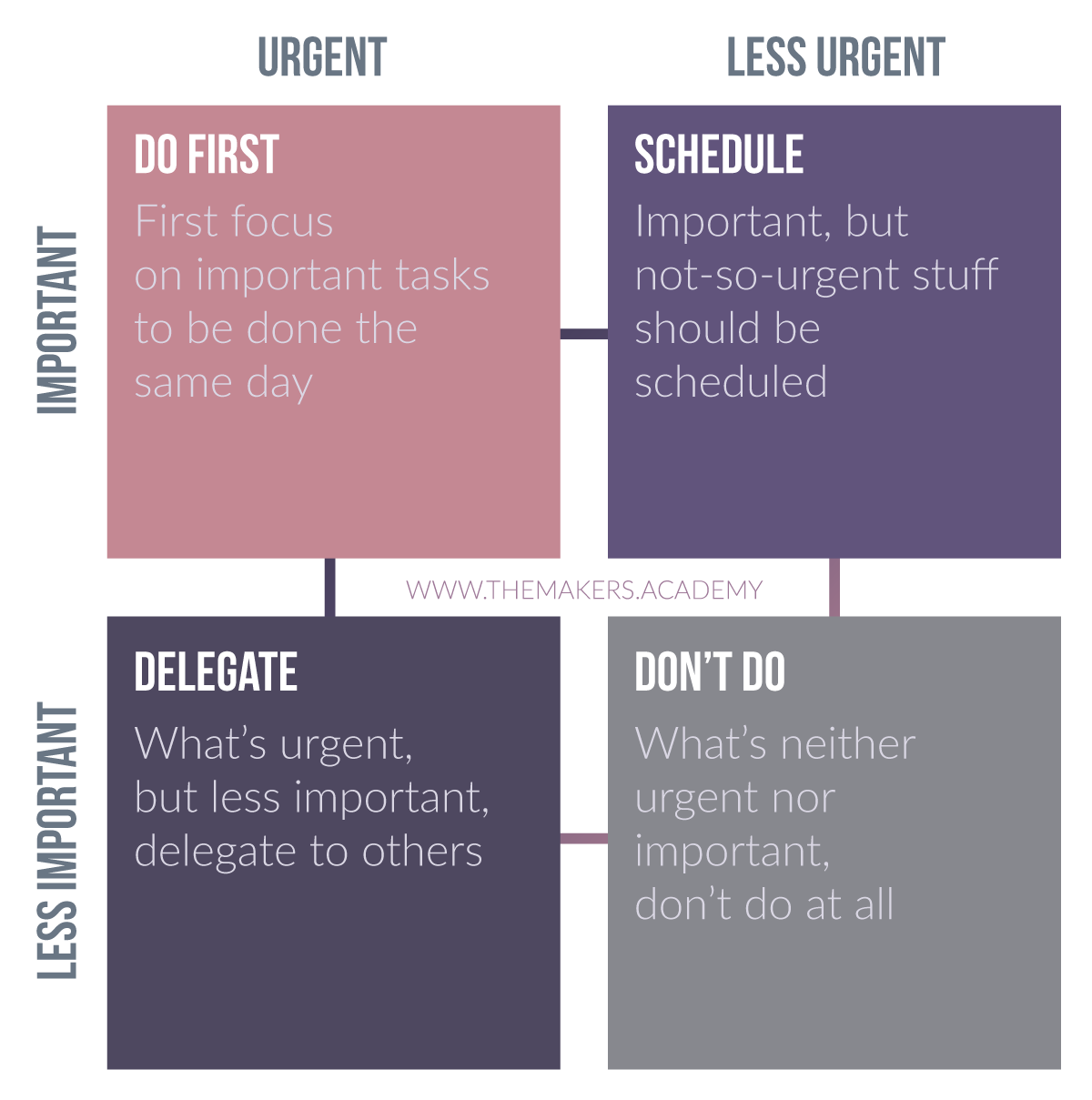We all know every business needs to be active on social media to succeed, right? I think it’s a safe bet to say you probably spend a fair chunk of your time trying to increase your brand engagement on Facebook and Instagram, trying to come up with the perfect caption to go with your great image you spent ages getting just right. But here’s an idea: cracking the social media code is not actually what matters most.
Getting your brand right, first and foremost, is what will see your business succeed.

Here’s why:
In my travels around ye old internet and at face to face markets with new stall holders, and even with my own students in The Makers Academy, I see SO many people putting ALL their focus into improving their Facebook engagement, or trying to grow their Instagram following, or worrying about wtf to post to Twitter or something else equally as frustrating and difficult to “crack” in terms of making more sales. And they keep asking again and again how to make it work, worrying they are doing something wrong on a certain platform because their follower numbers aren’t exploding, or no matter how often they post, they’re still not getting a sale.
If that sounds familiar at all, just know that I get it. Facebook is hard. Instagram is hard. Twitter is basically dying so probably don’t bother unless you’ve got a really good community thing going there already. Social media is HARD. But I’m here to tell you that if you are not making sales, it’s more than likely NOT because you haven’t hit 2000, 10,000 or 100,000 followers yet.
It’s because something about your brand sucks.
And I don’t mean your visual brand, because that actually doesn’t even matter as much as what I’m talking about. Too many people go out and get their logo designed and order 1000 business cards before they’re ready to do so – before they know what their brand really is.
You might also like to read: The Top 5 reasons you MUST have a website for your business
So what do I mean when I say brand, if not your logo and colour scheme and website design?
The answer is simple and yet complex:
Your brand is the promise you’re making to your potential customers with every single interaction you have with them. It’s the experience they have at every touch point. It is their expectation of what you are going to do for them, with whatever your thing is (a product, service, program or some other offering).
Your brand is what other people are saying about you when you’re not in the room.
You express your brand through the core values of your business, the tone of your emails and website copy, the colours and images you use in your visual branding, the level of customer service you give, the conversations you have at networking events, and the way in which you help people every day.
“A brand used to be something else. It used to be a logo or a design or a wrapper. Today, that’s a shadow of the brand, something that might mark the brand’s existence. But just as it takes more than a hat to be a cowboy, it takes more than a designer prattling on about texture to make a brand. If you’ve never heard of it, if you wouldn’t choose it, if you don’t recommend it, then there is no brand, at least not for you.”
– Seth Godin
So why would I say that it must be something about your brand that is making you have sucky sales? Well, it all comes back to the fundamentals of having a strong business, and I believe this is built on a strong brand.
If you are getting very few sales, don’t start blaming Facebook or Instagram. Social media is one tiny part of the marketing pie, and marketing is only one part of making your business a success. If you are resting your entire business model on social media, it’s going to be a loooong and difficult road for you.
You might also like: Why having a strong visual brand is important and how a style guide can help you
So let’s take a few steps back, and make sure you’ve got the fundamentals in place.
- Do you know who your target audience is?
- Do you know what specific problem you are solving for them?
- Do you know where they are and how to bring them to where you are?
- Do you know who your competition is, what they do well and how you differentiate yourself from them?
- Do you know what value your product brings to a customer – the benefits, not just the features?
- Do you know the mission statement of your business?
- Do you know how to communicate all this effectively to your customers?
- Does your business have a website that confidently sends the right message to your customers?
These are just a few of the questions you need to be able to answer to ensure the 7 keys areas of your business are strong. More than likely, if you’re not making as many sales as you’d like to, one of these key areas needs some work. I define the 7 key areas of your business as:
- Your Product
- Your Customer
- Your Messaging
- Your Website
- Your Plan
- Your Marketing
- Your Operations
Almost everything in business comes back to how well you know your customer, ensuring your product has value, having a solid home base, communicating effectively with your prospects, successful marketing strategies and executing a thoughtful action plan.
Even if you’ve been in business a while, it’s worth revisiting all these areas regularly (I’d say at least once per year), to ensure you are on track and heading in the right direction with your business. The hardest part of course is setting aside time to do such things, because usually we tend to focus on the urgent tasks, not the important tasks (as shown in the Eisenhower Matrix below… the top-right quadrant is often so neglected!).

We need to schedule the non-urgent, important tasks (such as business planning and maintenance!) or they’ll never get done.
Make the time to ensure the 7 key areas of your business are solid. They are the foundations that hold everything else up, including your social media engagement.
CAN YOU CONFIDENTLY SAY YOU ARE WORKING ON THE RIGHT THING, RIGHT NOW IN YOUR BUSINESS?
Sometimes, even when we are doing all the right things, it can feel like we’re spinning our wheels and not moving forward at all. This could be because you’re focusing on the wrong area of your business – or doing all the right things, but at the wrong time.
